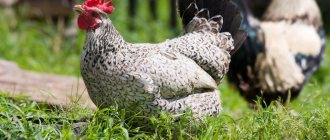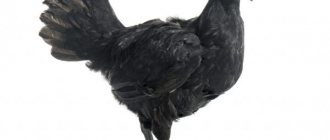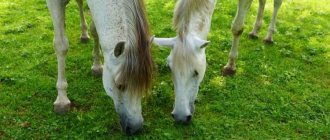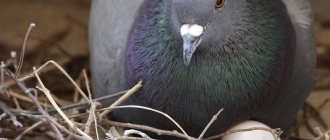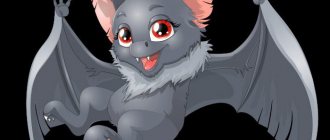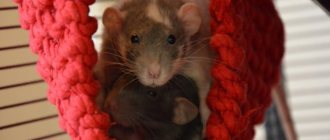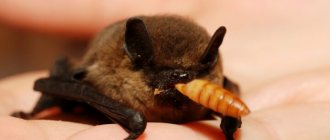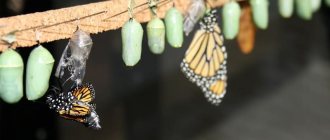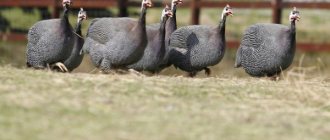Beautiful fighting pigeons called Takla appeared in Turkey in ancient times. The Turks used them to send and receive important letters. Nowadays they are bred in many countries, including Russia. Pigeons have excellent flight characteristics; in the air they can make the most unusual movements and flips.
Description of fighting pigeons
Takla pigeons are one of the popular breeds in different countries due to their flying abilities.
They acquired the name “fighting” due to the specific play of their wings during flight. Their breeding is common among experienced breeders of fighting pigeons. The Takla pigeon is popular all over the world
Description
Turkish pigeons are very popular in the country of the same name. The birds originated from areas of Turkey and are distributed to breeders in other countries from their lands. Representatives of the species are strikingly different in appearance. The external characteristics of the breed have divisions:
- forelock;
- two-toothed;
- mustachioed;
- nasodentate.
Takla pigeons received their name based on the translation of the word from Turkish as somersault. Pigeons of this species perform somersaults in flight.
The great-grandfathers of pigeons appeared in the tenth century, in the Mediterranean. Although other localities ascribe to themselves the role of ancestor. Doves were intended to serve people in high positions.
There is an assumption that pigeons of the Takla breed gave rise to the following species of birds:
- Iranian;
- Iraqi;
- Syrian;
- Armenian
Birds of the species in question can continue flying for ten hours without stopping. They are considered to be the brightest representatives of fighting birds. At the moment of a somersault, individuals may lose concentration and fall, often injuring themselves.
The Takla pigeon has excellent flight qualities
They take on a variety of feather colors. A predisposition to long flights is characteristic of pigeons that do not have bright plumage. Pigeons require special training to master the skill of tumbling flight.
Breeders who are not endowed with experience in keeping pigeons turn this breed into clumsy birds.
Fighting pigeons belong to a mixed type of rearing, since their meat is not of interest to breeders, and their external characteristics are not endowed with distinctive features. The appearance of the birds is unassuming, and looks like wild pigeons. And the more ordinary the pigeon’s plumage, the better its flight.
The more unassuming the color of the Takla pigeon, the better it flies
birds do not belong to the category of unpretentious individuals. They are very demanding about their content. Takla breeding is carried out mainly by experienced breeders.
In order to achieve the expected results from pigeons, you should devote a long time to their training and maintenance. Otherwise, they will not demonstrate their natural abilities to you and all the investments you have made will not be justified.
It is recommended to purchase an already trained and prepared pigeon. But mature and flightable individuals are much more expensive. Keep in mind that both young and inexperienced tackles are expensive. species is carried out without crossing with other individuals.
This indicates the stable purity of pigeons.
Fighting Takla are divided into several types: Boz, Miro, Eflaton, Sabuni, Sivash.
In some of the representatives, the plumage takes on a gray tint, and feathers grow on their paws. The category of elite birds includes fighting birds with milky white feathers.
White Takla are considered elite
During the period of the Ottoman Empire, pigeons of this species were a bargaining chip in the market.
Slaughterhouses are common among experienced breeders who have acquired experience and theoretical skills in training and keeping birds.
The essence of their maintenance is not demanding nutrition or care. If you decide to purchase a fighting breed without being trained to fly, get ready for grueling work. Which will take a lot of your time and patience.
Pigeons trained to fly are several times more expensive than young ones. They are distributed throughout Turkey. Which, concurrently, is their ancestor according to one version. This country has extensive experience in training fighters to fly in a unique way. This is why this view is valued.
Crossing an individual with other species leads to the loss of the original quality of the takla. Flight ability and consistent cleanliness are the determining factors associated with market value.
Crossing species does not guarantee the production of a new species that has takla qualities.
Subtleties of content
A feature of takla pigeons is their demanding attitude to their maintenance. In order to achieve good flight performance from birds and the beauty of combat, they need to instill certain skills. Therefore, it is advisable to have already trained adult pigeons among the livestock.
They are more valuable than young animals, but will ensure demonstration of the best natural qualities of the breed during training.
Experts pay attention to keeping birds in premises where there are no pigeons of other breeds and subspecies
To get a stable, high-quality result, you need to pay attention to the content of the takla:
- Ensure an acceptable height of the room - the dovecote should be 1.5 meters or higher.
- Equip the places where individuals stay with smooth, painted perches
- Birds should have plenty of free space (at least 1.5 meters).
- Provide pets with good ventilation.
- Equip with a vestibule and seal the cracks to prevent the entry of small predators.
- Sanitize every month.
- Pays close attention to the health of the breed. Individuals with the slightest suspicion of the disease should be immediately removed.
- Pigeons must be trained constantly.
Much attention is paid to the drinking regime and feeding of pets. Regular training and feeding chicks can dehydrate the body of individuals
Therefore, they need 80 ml of water per day. As usual, they drink 60 ml of clean, non-chlorinated water.
This breed can be kept in cages or enclosures. Among pigeon lovers, there are people who have adapted balconies for tackling, but such a place is not an acceptable option for this bird.
Aviary rooms or cages should be quite large, with sufficient light and good ventilation.
Takla belongs to the flying breeds, which means that one bird must have at least 50 square centimeters of floor space, in addition, 1.5 meters of air space will be needed.
If you decide to build an aviary yourself, then it is important to remember that the bars or the size of the mesh cells should not allow birds to stick their heads into the gaps. When arranging stationary enclosures, you can use the dovecote itself as the floor, and attach a frame structure to it
For takla it is very important that it is always dry underfoot; moisture is not allowed here.
Peculiarities
Takla pigeons are the most popular fighting birds in Turkey. All other options are regional. This breed comes in a variety of species, differing in both color and shape. Fighting tackles perform the “pillar” at different speeds, while they also somersault and flap their wings. They have eyebrows and a forelock on their heads, and bright plumage on their paws. The fighting qualities of individuals of this breed are expressed differently. Some people develop a unique flight style after three months of training, while others have to wait three years for similar results. It is the butterfly-style fight (flying without a circle and rising vertically upward) and going into the “pillar” that increases interest in this bird.
The flight of the takla is extremely beautiful. It can last up to ten hours. During the fight, the bird shows its most extraordinary qualities, it can go into the “pillar” several times in a row and repeat it for 2 - 5 hours. It is worth noting that the height of the “pillar” can reach 20 m. However, such tricks are not always performed smoothly. Sometimes a pigeon may become disorientated, fall to the ground, and become injured as a result. But this happens extremely rarely.
Fans of this breed note that during flight, in particular when tumbling, the sound of flapping wings for them is a real symphony that no one can repeat.
Each takla pigeon has a unique flying and fighting style. However, some have a special style – taban. It is as follows: a pigeon takes off from a spot with a radius of 3 m and after the flight lands in the same place
While he is spinning in the air, 5 dropper pigeons are released onto the nickel, which should attract the attention of the one who has taken off. As soon as he notices them, he folds his wings and falls down, like a falcon flying towards its prey.
From the outside it seems that he is about to crash to the ground, but no - the flyer spreads his wings, performs a taban (somersault) and soars up with a noise. Then somersault again, rise again, and so on several times. The more somersaults and the higher the “pillar”, the more valuable the pigeon. At the end of the mesmerizing performance, the bird flies up to the penny, makes a final somersault and lands on the ground. After this, more claps are heard - the applause of the spectators who were watching everything.
The breed is valued for its unique flight style: performing a “pillar” up to 20 m, somersaults and flapping its wings.
Variety of colors
The range of color variations in Baku pigeons is quite wide, ranging from pure white colors to black and bronze. Let us describe several types of color of the breed.
- Agbash. The species has different colors, but the head is always white. Among them there are representatives with bare legs, and also there are shaggy-legged birds; you can see smooth-headed and forelocked individuals.
- Black-tailed pigeons. Usually the birds are monochromatic in different colors, but in any case the tail feathers are painted black or red.
- White Baku pigeons. This is a whole squad of representatives of the breed, united by the white color. It is believed that they are superior in flight and combat qualities to other colors.
- Mirror pigeons. Another subspecies of Baku, it is characterized by a symmetrical feather pattern, among them there are colored sides and tails.
- Baku chili pigeons. They are found in black and red colors only with a motley head; the brushes on the legs are also pockmarked; usually the feathers are black with white splashes. There are also forelock species among them. The plumage of this species is dense and dense, and has a purple tint on the neck and chest.
- Marbled pigeons. Outwardly they resemble chili, but the color is speckled, that is, feathers of different colors alternate. Thanks to this feature, pigeons look very unusual. In young individuals, rare inclusions are lighter, but after molting they darken, the colors become more saturated, which indicates the maturity of the bird. The darker the colors, the older the pigeon.
Marbled fighting pigeons have a peculiarity: their color is associated with gender.
Marbled pigeons are able to mate only with pigeons of their own breed.
For example, a marbled dove from a partner of the same color will receive offspring of its own color only from males. When the male has homozygous genes, and his girlfriend is of a different color, the chicks will still all be marbled. If he is not homozygous, then the color of the chicks will alternate, regardless of gender.
- Dove necks. The color of pigeons is most often white, their eyes are cherry, and they have no eyelids. The neck is without a characteristic bend; there is a bright spot on the back of it. Color options can be reddish, bluish, black, yellow, and there are also several multi-colored feathers in the tail. Chubby necks are rare.
- Grivuns. The species was bred at the beginning of the 20th century by a breed lover, Schmidt. The creator tried to preserve all the advantages of the Baku pigeons, but developed a completely new type of pigeon with uniform light plumage and bright coloring on the nape. The front retains the typical cast on the neck. The forelock for hryvnias is a frequent occurrence; the back is always colored, but the front remains white.
The yellow pigeon is rare, the coloring is unusual for the native Baku people, it is a product of Krasnodar breeders. Usually this is the name given to hryvnias or necks with yellow spots on the neck.
Baku people of these colors are popular in Russia, as they are beautiful, unusual, and valued for their unpretentiousness and adaptability to various climatic conditions.
The yellow pigeon is extremely rare and is therefore highly valued by breeders.
Feeding
Agarans are not picky when it comes to food. The young are fed on their own. During the breeding season and active flight, they need a large amount of protein. Feeding with a small amount of sugar has a positive effect on muscles.
DIY feed mixtures for agarans:
- Basic feed: 25% wheat, 20% corn, 10% small legumes, 10% flax seeds, 20% vetch, 10% peas, 5% barley. 40-50 g of feed per head are provided per day.
- Flying mixture: 35% peas, 20% barley, 10% each millet, oats, vetch and corn, 5% barley with additives in the form of rapeseed, hemp and flaxseed (3-4 g per head). 50 g of feed per head is given per day.
- Winter mixture: 60% barley, 35% wheat, 5% corn. Issued 30-40 g per day per head.
Requirements for perches
Takla in flight
If the perch is not secured properly, the pigeon may develop problems with the spine. This is especially dangerous for young animals; a bird with such a disease will never be able to fly well, and this is already a reason for culling, despite its purebred.
The roost is where pigeons sleep and sometimes stay awake. They hold onto the poles with their paws, wrapping their fingers around the tree. The thickness of the filler should not differ greatly from the size of the fingers.
You cannot make the perch thin and round. As a rule, they create structures in the form of tetrahedrons, which does not allow birds to slide on them. The width of the poles should be half that of the maximum distance when the pigeon's toes are fully extended.
It is important not to forget to promptly sand and paint the poles, from which the old paint is initially removed and all nicks are cleaned
Diseases
Birds are susceptible to diseases:
- Salmonellosis . Symptoms: sterility, death of embryos, droppings with blood or mucus, joint damage, subcutaneous lumps.
- Trichomonosis . Symptoms: yellow formations on the mucous membranes, narrowed lumen of the larynx, gluing of plumage, lethargy, bloated abdomen, droppings with the smell of rot.
- Coccidiosis . Symptoms: weight loss, pulled head, loss of appetite, lethargy, paralysis, diarrhea with blood or mucus.
- Paramyxovirus . Symptoms: thirst, liquefied droppings, fearfulness, loss, paralysis, neck twisting.
- Parasites
- Infectious
Trichomoniasis
Main symptoms, measures for treatment and prevention of the disease
Read
Worms
What is the danger of infection, how to treat and prevent it
Read
Paratyphoid
A disease that leads to pathological changes in the gastrointestinal tract and the development of septicemia.
Read
Psittacosis
Disease with severe respiratory disorders
Read
Coccidiosis
An infectious disease that affects the tissues of the gastrointestinal tract
Read
Smallpox
Infectious disease of pigeons. Affects the skin, mucous membranes and leads to the death of the bird
Read
Salmonellosis
Characterized by indigestion, fatal to birds
Read
Breeding history
Photo of the breed:
The very first fighting pigeons of this breed were brought from Central Asia to Turkey. In ancient times, Takla pigeons were kept to convey urgent letters.
The birds were well versed in their surroundings; after transmitting a message, they always returned to their nests with a letter tied to their paws.
With constant training of Takla pigeons, Turkish residents noticed their beautiful summer style. The most beautiful and ambitious birds, which performed the best flips and somersaults in the air, were singled out from others and began to be crossed with each other.
Then birds began to be sent from Turkey to other countries. When the birds reached the Middle East they received their first description, this happened in 1055.
The first areas of distribution were the following regions:
- Siberia
- Kazakhstan
- China
- Mediterranean
These birds arrived in Europe in 1071.
Reviews about the breed
Below are reviews from real people about Takla pigeons:
★★★★★
Evgeniy Onishchenko, 32 years old. A couple of years ago I wanted to start breeding takla, after seeing a video on YouTube, I literally fell in love with them, but after weighing everything, I abandoned this idea.
You need to devote a lot of time to them, which I don’t have, and besides, caring for them is also not easy. I refused them, but I think this breed of pigeons is interesting and not expensive. ★★★★★
Valeria, 47 years old, poultry farmer, trainer. I have been breeding taklov for more than six years.
The work is not easy. Daily training and bird care take a lot of time and effort. But it’s interesting to me, and it also brings in some income. Hide
Add your review
Turkish Takla fighting pigeons are the most beautiful representatives among birds. In addition, they have one more feature - long-range flight and beautiful flips in the air. In general, breeding Takla pigeons is a profitable business, the main thing is to do it correctly.
0
0
Copy link
Turkish takla pigeons - what kind of breed is it?
Despite the fact that takla are Turkish pigeons, the breed is not indigenous. The homeland of birds is the central regions of Asia, Mongolia. This is a fighting breed. Birds appeared on the Mediterranean coast in the 10th century thanks to Asian nomads.
Long-term selection has left only a vague resemblance between modern taklas and their historical predecessors.
Takla combines an attractive appearance and extraordinary abilities
Additional Information! The original breed was preserved in its pure form only in Turkey.
Turkish bird lovers managed to achieve such purity of the breed only due to the fact that for several centuries pigeons were bred only in their own right. The purpose of selection is to improve fighting qualities, endurance and flight characteristics.
Description of what makes it unique
Takla are Turkish pigeons with a large population. The appearance of birds depends on the type of breed. Unique characteristics of birds:
- The height of the flight column is from 18 to 20 m.
- Flight duration is during daylight hours, from 8 to 10 hours.
- The ability to move into the pillar several times in a row.
- Some subspecies of the breed have the ability to engage in spiral combat, during which they make circular turns with their bodies, rising upward as if in a spiral line.
- Performing somersaults during flight, each somersault with an interval of 60-90 cm.
Landing game during flight - birds freeze in the sky at an angle of 90°, in a pose as if they are ready to land - legs in front, head down
Diseases of birds: psittacosis
Pigeons, like people, have a lot of diseases. One of them is psittacosis. This is a viral disease that affects birds during cold periods, when the immune system is very weak. The virus is caused by chlamydia when the respiratory system is affected. Approximately 150 species of birds carry the disease. It is necessary for everyone who breeds these beautiful birds to know the symptoms and treatment of ornithosis in pigeons.
Symptoms
The following symptoms are characteristic of psittacosis:
- diarrhea
- drowsiness
- noticeable decrease in motor activity
- dyspnea
- lack of appetite
- poor growth
- ugly plumage
Such symptoms are typical for chicks. Adults develop a runny nose, wheezing, heavy breathing, inflamed mucous membranes and eyes that constantly water. If the main signs of infection appear, measures must be taken. Otherwise, the bird's legs and wings will be paralyzed.
Psittacosis in pigeons
If a pigeon continuously sneezes and shakes its head, this means that it needs to get rid of the fluid that is secreted from the nose. The course of the disease is accompanied by severe shortness of breath and wheezing in the nasal cavity. If you do not start treating the bird in a timely manner and do not provide the necessary care, as a result, it will die.
Treatment
Most symptomatic medications for intestinal disorders have little effect. Those birds with very pronounced clinical signs are separated from other individuals, and if the condition is hopeless, they are immediately destroyed. Antibiotics are actively used for preventive purposes, and in very large dosages for several days.
During active treatment, vitamins A, D3, and E should be added to food, due to the fact that antibiotics destroy to a large extent the microflora involved in the combination of vitamins. Medicines that can give a positive effect regarding the disease in birds include ampicillin, morphocycline, and terramycin.
Prevention
For preventive purposes, returning or newly acquired birds must be quarantined. It is also necessary to disinfect the transport equipment of the pigeon room. Current disinfection is carried out with a two percent hot soda solution, a formaldehyde solution, and half a percent phenol. It is necessary to follow the rules on preventive measures for people from psittacosis. It is strictly forbidden to feed birds from the mouth.
It is recommended to carry out cleaning of the dovecote in compliance with all safety precautions. Be sure to wear gloves and a respirator when cleaning
Danger to humans
- If you come across a lethargic, absolutely inactive bird on the street that does not move when a person approaches, then you should worry, as the virus spreads by airborne droplets.
- In addition, you can become infected in other ways. Quite often pigeons gather on the windowsill, which may turn out to be sick. When a window is opened, frightened pigeons suddenly fly in and fly close to your face, which can become a method of infection.
- The main danger is that the disease can be completely asymptomatic, although the pigeon is already infected.
Signs of a viral disease in humans are cough, chills, soreness in the respiratory tract, muscle pain, and high fever. The symptoms are similar to pneumonia, so the disease is severe; treatment usually lasts several months. For this reason, you need to be extremely careful with sick pigeons.
Turkish somersault
More fighting pigeons are bred in Turkey than in all other countries. Flight and ornamental birds here exist in a huge number of species. But Turkish pigeon breeders are especially proud of the Takla breed, and at the international level.
"Takla" means "somersault" in Turkish. It is known about the ancestors of the Takla breed representatives that before they came to Turkey, they had nests in Western China, on the territory of modern Kazakhstan and in some places in Central Asia. Birds came to Turkey in the 11th century with nomads.
Turkish takla
Seljuk tribes from the territories where modern Mongolia is located migrated to Turkey. And they brought with them tumbling birds. The Turkish Sultan, whose palaces were supplied with all the new items and wonders, immediately became interested in the curious birds. These pigeons were very beautiful. Luxuriously feathered legs, “eyebrows” or chic forelocks on the head. And now the entire retinue of the Sultan begins to breed tumbling pigeons to please the ruler.
Turkish takla pigeons
The vast majority of Russian slaughterers today are descendants of Turkish taklas, whom the Kuban Cossacks brought from the Persian campaigns to the royal court as exotic trophies.
Nutrition
How do pigeons reproduce?
Birds of this breed require seasonal nutrition. Both grain and crushed grain can be used as feed. In summer, the volume of millet and crushed barley should be a priority, while in winter, cereals are mixed in equal quantities.
For feeding young animals under one month of age, steamed compound feed in a medium liquid state, mixed with whey or skim milk, is used. One baby eats up to 15 grams of the mixture per day, by the month the volume increases to 30 grams. This amount is also required for feeding adults. It is imperative to give the pigeons small pebbles daily.
When molting occurs, birds need to be fed with vegetable oil or fish oil. They also need vitamin complexes for full development, which can be replaced by green grass in the summer. In addition, care should be taken to ensure that pigeons have 24/7 access to clean and fresh drinking water.
See the following video for the colors of Turkish Takla pigeons.
Features of reproduction
The dove is a faithful bird and chooses a mate for life. In this regard, it is necessary to keep the same number of females and males in the enclosure so that during the mating season everyone finds a mate.
Females cope well with the role of mother; they incubate and take care of the offspring on their own. Only the short-billed “Armavirians” will need help.
Due to its natural feature - a short beak, it cannot fully feed the chicks. Experts recommend laying eggs of this variety with other breeds of birds.
So, Armavir Kosmachi is a beautiful and unique breed that needs to fly regularly. Only in this case will she retain the skill of her amazing flight, which so fascinates a person and makes time stop.
Training rules
Takla pigeons are very smart birds, they have excellent memory, and spatial orientation is beyond praise, so losses of birds are rather an exception. Training should begin when the takla reaches 6 weeks of age, as by this time it already has adult plumage. It must be taken into account that during the molting period, classes must be stopped.
The bird must know the owner, who will introduce him to the take-off site and develop the necessary signal by which the pigeon should return to the ground. The signal can be a whistle or flashing flashlight, as well as a dropper - a decoy pigeon specially placed on the site as a call to descend. This condition greatly simplifies the work with birds, and subsequently significantly saves time on returning the flock.
It is recommended to start training with 30 minutes. At the same time, the pigeon should not take breaks to rest - if it sits, for example, on a tree, it must be driven away or removed with a special device resembling a regular net. It must be established in the mind of the bird that the move to the site should end in flight.
If there is a rut, then first the adult pigeons are brought to the site, and the young are released closer to the end of their flight time. Landing must occur at the same time. Also, after a certain time, it is recommended to train young birds together with the leader of the flock - it is he who teaches inexperienced birds the basic elements of flight. This happens after the birds are able to fly for at least 2 hours. Before taking the birds to the site, they should be given light food, the amount of which should not exceed a third of the daily dose. Females are freed from flight before laying, just like individuals during the molting process.
Pigeon breeders must take into account that if during training the birds abuse rest, they will not fly and perform the basic elements of flight.
When the pigeons can stay in the air for more than 2 hours, the focus of the training expands. The birds are trained in orientation on the ground, for example, they are taken to a certain distance from the site and released there. At first, the point is not too far from the landing site so that the bird can easily find its way home; as the exercises continue, the distance gradually increases.
In some countries, competitions among fighting pigeons have become widespread. During the competition, indicators such as the ability to navigate the terrain, time spent in the air, landing on a signal and others are taken into account.
Description of fighting pigeons
Takla pigeons are one of the popular breeds in different countries due to their flying abilities. They acquired the name “fighting” due to the specific play of their wings during flight. Their breeding is common among experienced breeders of fighting pigeons.
The Takla pigeon is popular all over the world
Turkish pigeons are very popular in the country of the same name. The birds originated from areas of Turkey and are distributed to breeders in other countries from their lands. Representatives of the species are strikingly different in appearance. The external characteristics of the breed have divisions:
Takla pigeons received their name based on the translation of the word from Turkish as somersault. Pigeons of this species perform somersaults in flight. The great-grandfathers of pigeons appeared in the tenth century, in the Mediterranean. Although other localities ascribe to themselves the role of ancestor. Doves were intended to serve people in high positions. There is an assumption that pigeons of the Takla breed gave rise to the following species of birds:
Birds of the species in question can continue flying for ten hours without stopping. They are considered to be the brightest representatives of fighting birds. At the moment of a somersault, individuals may lose concentration and fall, often injuring themselves.
The Takla pigeon has excellent flight qualities
They take on a variety of feather colors. A predisposition to long flights is characteristic of pigeons that do not have bright plumage. Pigeons require special training to master the skill of tumbling flight.
Breeders who are not endowed with experience in keeping pigeons turn this breed into clumsy birds.
Fighting pigeons belong to a mixed type of rearing, since their meat is not of interest to breeders, and their external characteristics are not endowed with distinctive features. The appearance of the birds is unassuming, and looks like wild pigeons. And the more ordinary the pigeon’s plumage, the better its flight.
Breeding pigeons in order to produce individuals that show breathtaking choreographic numbers is an expensive business. It takes time and money to get the expected result. Otherwise, representatives of the species, in addition to external resemblance to yard pigeons, will also acquire qualitative similarity. This will cause significant losses on the part of the breeder.
The more unassuming the color of the Takla pigeon, the better it flies
External data and distinctive features
How long do pigeons live
Turkey pigeons, as they are sometimes called, vary greatly in appearance depending on their color. Based on their distinctive features, the following subspecies are distinguished:
- nasodentate;
- two-toothed;
- mustachioed;
- forelock.
Basic, general description of appearance:
- body - standard, slender, neatly folded;
- legs - covered with shaggy feathers;
- colors are the most varied, but the dominant ones are bluish and variegated shades;
- The tail of most subspecies of the breed is painted white, the same shade is also on the head, where there is a cap of thick feathers.
Additional Information! The breed got its name because “takla” is translated from Turkish as “somersault”.
How to choose the right bird
When buying a bird, you need to focus on why the pigeons will be bred. If you just want to admire their appearance, preference is given to birds with bright colors. If the goal of a pigeon breeder is the development of flying qualities and training, when choosing, you need to focus on those birds that have an unremarkable plumage color.
On various Moscow, Volgograd, Samara and Orenburg portals for pigeon breeding you can find many advertisements for the sale of takla
You need to pay attention to the price of birds
Representatives of this breed cannot be cheap; for one individual you will have to pay from 100 to 500 dollars. If the cost is low, most likely we are talking about the sale of culled pigeons.
Takla pigeons - colors and their names
Information about the various representatives of the breed is given below:
- Mardin is distinguished by its picturesque flight, although it does not rise high into the sky. The shades of plumage are different, from gray to deep black.
- Sivash - weak flight, but fighting qualities at the highest level. The tail is white, the forelock is black.
- Malatya - colors are marbled, variegated and striped. This subspecies is distinguished by its ability to perform magnificent acrobatic tricks in the air.
- Ankara has a petite build. The plumage can be colored silver, red, brown, bluish, or yellow.
- Urfa - wings lowered, tail elongated. The plumage is yellow-brown, turning into deep black.
- Konya are fighting pigeons, resembling mardins in appearance.
- Trabzons are black or gray-brown. It is preferable to choose birds with a white tail and a light spot on the chest.
- Antalya - miniature pigeons. This is the rarest type of fighting pigeon.
- Diyarbakir. The body shape is round, the color is varied.
Representatives of the breed have excellent decorative characteristics
Takla Feature
The main supplier and breeder of Takla fighting pigeons is Turkey, but they are popular all over the world. These pigeons have two positive features at once - beauty and flight; their somersaults are indeed very original and beautiful.
Pigeons fly for up to 10 hours every day, but this needs to be reinforced and improved by training, which should occur from a very early age. Taklas are smart, intelligent, they have a good memory, they also learn easily and remember tricks.
Summer Features:
- Pigeons fly all day long.
- During fights, pigeons enter the pillar several times in a row.
- They can repeat fight cycles for up to 5 hours.
- Pigeons can rise up to 20 meters or more.
- The best fighters are pigeons whose colors are faded.
Fighting skills manifest themselves in different ways, and at a young age. For some, three months of training is enough and they begin to struggle when they are not even a year old, while others will need several years of hard training.
Education
Pigeons perform many tricks beautifully; turning over in flight is very easy. Moreover, in the “fight” trick, their wings click, then the birds fly into a vertical position in a beautiful row. Apart from Takla, no other pigeons are able to repeat these tricks one after another.
An ordinary person will not be able to teach a chick tricks from childhood, so it is recommended to buy an older and already trained bird. But you should know that you will have to pay a lot of money for smart adult birds that can perform magnificent tricks. The approximate price of 1 individual is from 100 to 150 dollars. When choosing a pigeon, you need to pay attention to the colors - beautiful, bright and colorful pigeons will not be very good flyers, but on the contrary, monochromatic and not bright birds learn quickly and fly beautifully, creating somersaults.
Requirements for conditions of detention
Keeping takla pigeons at home is quite difficult. This bird is very whimsical, picky and demanding. Only experienced breeders can breed pigeons of this breed. In addition to careful care, the bird must be properly trained. Without this, Turkish birds will never be able to demonstrate their unique natural qualities.
Inexperienced breeders are advised to purchase only trained individuals. This is the only way they can improve their existing skills. Further breeding should not involve crossing with other breeds. Only in this case can we talk about the purebred takla
Pigeons perform their tricks in flight, so it is important to train them to fly correctly, otherwise there is a risk of a fatal fall.
Keeping poultry at home is quite difficult: careful care and constant training are required.
The health of birds must also be constantly monitored. The first thing that needs to be observed is hygiene and regular disinfection. At the slightest sign of illness, urgent measures are necessary. A sick Turkish takla should be immediately transferred to a separate room. At the same time, we should not forget about the occupancy of the poultry house, that is, the freedom of movement of pets.
Each bird needs 0.5 sq. m of floor, 1.5 m of air space, as well as smooth and painted perches. At the same time, do not forget that the poultry house must be well protected and fortified. This means that no dog, cat, much less a rat or ferret will be able to get inside. Otherwise, in the morning there will be only feathers left from the pigeons on the floor.
To keep Turkish pigeons, you need to prepare enclosures or cages for them in advance, or better yet, build a spacious dovecote for your pets
It is very important to provide birds with isolation, good lighting and systematic ventilation.
Each individual will need at least 55-60 cm2. The recommended height in the enclosure should reach 1.70 m
Any material for construction can be used, but it is extremely important that the dimensional characteristics of the mesh cells do not allow birds to stick their heads through
The surface of the bottom of the enclosure is covered with wooden pallets made of solid boards
It is important that the boards always remain dry, since the birds' feet should not come into contact with moisture
Improperly secured perches can cause spinal curvature in birds. Pigeons suffering from this pathology lose their flight qualities. Pigeon breeders cull such birds.
Sitting on perches, pigeons spend a lot of time. With the help of their toes, they can firmly grasp the perch pole
This is why it is important to select a pole size that suits the dimensional characteristics of the finger coverage.
It is not recommended to use thin round perches. It is better to give preference to tetrahedral ones. The width of the perch should be between 2.8-3.5 cm. This indicator is ideal for the pigeon to be able to spread its legs as much as possible and maintain balance.
Turkish Takla pigeons require additional equipment that resembles the appearance of a rectangle. The top and sides of the frame are covered with mesh. The open side of the entrance is fixed to the enclosure. The other side is attached to the flight window. Arriving birds perch on the shelf protruding forward beyond the frame. This is where you will start at the beginning of the workout. If you build a two-section shelf, you can simultaneously use the equipment for departing and arriving birds.
Takla pigeons need to keep their nests clean every day. For bedding, experienced pigeon breeders recommend using:
- straw;
- layer of peat;
- oak bark;
- layer of needles;
- hay.
READ Baku pigeons fighting behavior characteristics
Some Takla owners use sand as bedding. But its main disadvantage is the need for daily replacement. Vegetable litter is removed and replaced with fresh litter in parts.
Keeping and caring for birds in a dovecote
The best option for a poultry house would be a special dovecote, where it will be free, light, ventilated and insulated. Caring for Takla should be at the luxury level in comfortable conditions: maintaining a varied feeding schedule, keeping the living space in order. All this is necessary so that the bird does not get sick, is active and flies high, showing very beautiful and unusual tricks.
Dimensions of the poultry house, supplying it with heat and ventilation
Free enclosures are built for all breeds, including Takla pigeons, because they need space not only in the air for various tricks, but also indoors. One bird needs 50 square centimeters on the floor and one and a half meters in height.
The material of the enclosure can be anything, the main thing is that it is durable. There should not be a wide distance between the bars so that the bird cannot stick its head between them and not suffocate. The bottom should be covered with a common board. It is important to ensure that the bird's feet are not exposed to moisture.
The temperature in the poultry house in winter should be from 5 to 7 degrees, and in summer no more than 20 degrees. Birds do not tolerate heat well, so they do not require additional heating, but thermal insulation must be created.
It is necessary to install ventilation in the poultry house; this could simply be an additional mesh door that should open on hot days. To ensure that fresh air always comes in, you can make several small windows in the grille above the floor. It will also be important to install hoods, thanks to which all unpleasant odors will go away.
Perches and nests
It seems that the perch is not such an important attribute, but it is not so. If it is not secured correctly, the pigeon may develop spinal deformation. Such birds, even at a young age, are rejected because they will not be able to fly well and perform complex tricks.
Pigeons will spend all their sleep and some time during the day on this device. Perches cannot be round and thin, they should be made triangular, the width of one perch should be such that the bird can sit down, spread its toes and hold on to it. This size ranges from 2.5 cm to 3.5, but these are not final figures.
From time to time the poles need to be sanded and painted, first removing the old layer of paint. The steam box for pigeons should have the following dimensions: 80 by 50 by 40. You need to place a pair of nests in it, the diameter of which will be 25 and the depth is 8 cm.
Standards and installation of feeders, drinkers and baths
An important condition is that no debris gets into the feeders and drinkers, and the size of the feeder depends on the number of pigeons in the house. Conventional feeders have a lid and vertical rods.
As for drinkers, today you can see a lot of varieties. It is better to give preference to the pneumatic option, because they are the most convenient, the water does not become polluted, because it is equipped with a lid, and the design itself is designed in such a way that birds cannot swim in it. Both the feeder and the drinker must be disinfected periodically.
Bathing is an indispensable part of a bird’s life, because thanks to bathing, birds’ immunity increases, and in the summer they do not suffer from the heat. When they begin to molt and the birds begin to bathe, they feel relieved. Pigeons, swimming in water, always remain beautiful and cheerful. Depending on how many birds there are on the farm, individual sizes of the bathing suit are selected. The height should always be no more than 10 cm, and the edges should be curved.
Hygiene and bedding
The bird room should be thoroughly cleaned every 30 days, and if there are sick birds, then once a week. Before disinfecting the room, it is necessary to clean the walls and poles and wash them with clean warm water and soap, and only after that disinfection is carried out.
A blowtorch is suitable for this procedure, since fire destroys all pathogenic microorganisms and parasites, even in crevices. The mixture should consist of 4% bleach, 1% formalin and 2% sodium.
The depth of the litter must be at least 5 cm, the material of which can be:
- straw;
- peat;
- needles;
- hay;
- branches;
- bark;
- sand.
If sand is used as bedding, then it needs to be changed frequently, and in the plant litter, part of the dirty part is removed and part of the new one is added.
Letok
Among the additional structures, the Taklam build a taphole, which looks like this: a triangular frame covered with mesh. 1 side of the entrance should be secured to the enclosure itself, and 2 to the window, from where the flock flies out just for a walk or for hard training. There is a cut in the entrance that looks out of the frame, and birds land on it when returning from the street.
In one day of light, a fighting pigeon is capable of flying 900 km, and the maximum speed it can reach is 70 km per hour.
Advantages and disadvantages
Advantages of Turkmen fighting pigeons:
- undemanding to living conditions;
- willingly sit on eggs, care for and feed the chicks;
- excellent flight qualities.
Although the breed is elite, disadvantages can also be found in it:
- Low fertility - only 2-3 chicks per year. For comparison, for example, tipplers bring up to 12 chicks per year.
- They cannot stay in enclosures all the time. If you do not release the agarans into the sky, their health deteriorates, the pigeons may even get sick, they lose their flight abilities - the height and duration of their stay in the sky.
- By tumbling in the air, pigeons risk their lives - they often fall, hitting the ground.
Since agarans produce few offspring, owners take care of the birds, and still the number of this breed is not large.
Advantages and disadvantages of Takla
Pigeons of the Takla breed have their own advantages:
- good orientation in the area, they quickly find their way home;
- unpretentiousness in maintenance, they can eat monotonous and meager food for a long time;
- endurance, because they can fly for a long time and high.
Flaws:
- susceptibility to diseases (read more about common diseases of pigeons here);
- demanding care;
- are expensive;
- if the bird is not trained, it will turn into a simple flying pigeon.
Fighting birds: description of the Turkish breed of Takla pigeons
The Takla pigeon breed is considered one of the most popular throughout the world, especially in Turkey. This country is the actual homeland of birds, and their main supplier. Why are they so popular? In this article we will try to answer this question in detail and in a fascinating way and clearly show these birds in a video.
Takla pigeons earned their popularity thanks to their flying abilities. They are also called fighting birds, and all this is because during the flight the birds play with their wings very gracefully and specifically.
Breeding this breed is very common among experienced breeders of fighting pigeons. The name Takla is translated from Turkish as somersault.
The birds received this nickname due to their beautiful, phenomenal and varied flight qualities.
Pigeons of the Takla breed differ from other representatives of this genus in their frantic love for somersaults in the sky. The birds are able to soar in the air for about 10 hours, while performing spectacular somersaults in the sky, as seen in the video below.
The names of these breeds are often invented based on the region where they are most common, or the places where they were first bred.
Appearance
Representatives of this species, although they come from the same country of the breeder, are very different in appearance.
They are divided into types such as:
- mustachioed;
- nasodentate;
- forelock;
- two-toothed.
Most Takla pigeons have a standard body structure, very neat, slender, but not massive. Birds have hairy legs.
Recently, variegated and bluish colors have become dominant in the color of birds; compared to the others, they look quite nice.
The breeds have changed greatly in appearance compared to the first representatives of the Takla. Experienced breeders and breeders admit that in our time it is a very difficult job to breed an ideal and standard pigeon in appearance. The category of elite birds includes fighting birds with milky-white feathers.
and bird care
Birds of the Takla breed belong to the type of whimsical and picky birds. They are very demanding of themselves and caring for them is very labor-intensive. Therefore, only experienced and wise breeders are engaged in breeding pigeons.
Before you achieve any results, you need to be very careful in the long-term training of keeping birds.
Otherwise, your birds will not demonstrate all their best qualities and natural abilities, and your work will not be justified.
If you do not properly train your birds to fly correctly, they may fall during the flight, and this can lead to death.
It is necessary to constantly monitor the health of birds; the slightest signs of disease must be taken under control.
Infected birds must be isolated in the poultry house. Hygiene in pigeon enclosures is the very first thing you must observe. The main thing is more freedom for pigeons. On average, one pigeon requires half a meter of square floor space and one and a half meters of air space. The poultry house must be securely protected and durable to prevent predators such as dogs, cats or rats from entering it.
Loading …
So, now, with our help, you have learned more about the fighting birds of the Takla breed. Despite all the difficulties in raising and caring for pigeons, the end result exceeds all expectations. Watching your pets perform complex somersaults at great heights while gracefully flapping their wings is priceless.
Exterior and views
Today, experts have come to the following conclusion: Taklas helped give birth to the following breeds:
- Iranian
- Iraqi
- Armenian
- Syrian
Takla pigeons are divided into 4 types based on appearance:
- Mustache
- Chubby
- Nasotooths
- Double-toothed
In Turkey, where Takla is bred in almost every yard, it is divided into 5 types:
- Sivash
- Miro
- Boz
- Sabuni
- Eflaton
Many of them have a standard body, slender, not massive. As for the color of pigeons, different colors are in the lead. But most often you can find the rock motley pigeon. The tail is almost always white, and the cap is the same color.
The legs of this breed are shaggy, that is, with feathers, the forelocks are funny, but you can’t fit everyone into one exterior. But these pigeons are not show pigeons; their specialty is flying and somersaults. The most sought-after “elite” birds are considered to be white and milky-white birds, because they have the best flight and fighting abilities.

